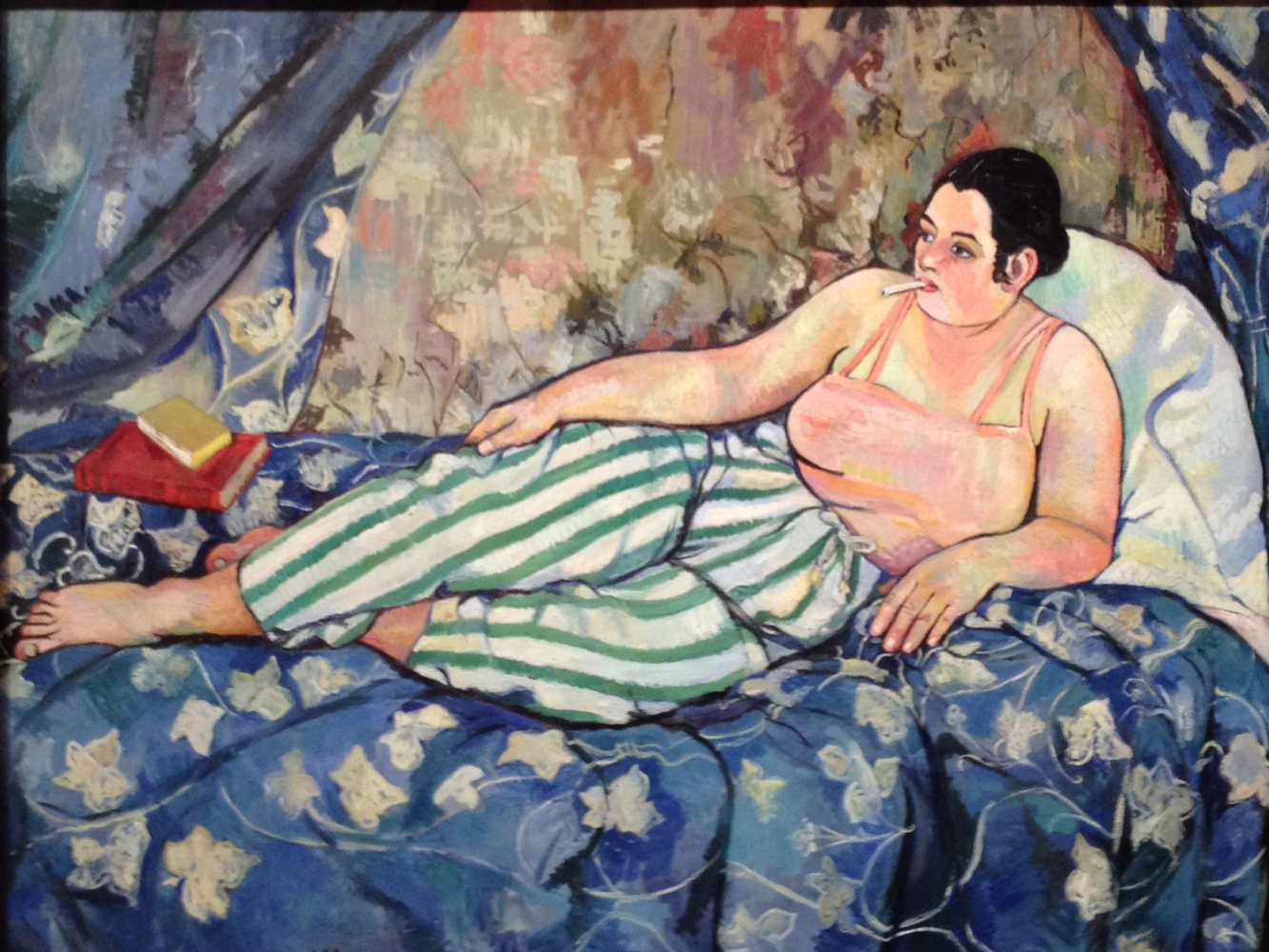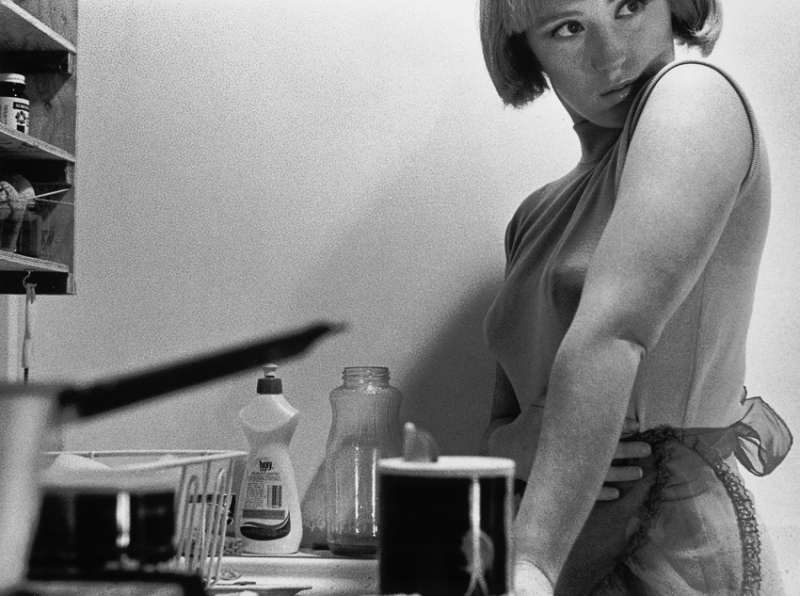Professor Cacoilo
Art and Women
29 April 2019
 Lily Martin Spencer
Lily Martin Spencer Her painting We Both Must Fade depicts the gender roles and expectations for young females. Spencer was born in the United Kingdom 1822. Surprisingly, she lived in Newark, NJ quite a time, before she moved to New York and died there at the age of 79. She was known for her humorous domestic genre scenes. She was raised in a not so typical home, father was always away, and her mother was the head the household. In her painting, Spencer darkens the room around the girl to intensify the meaning of the painting. We see a young woman with a bright blue dress observing herself whiling holding a flower that it's petals have started to fall. The woman it's acknowledging her beauty and how sooner or later it will start to fade just as the rose is beginning to. Spencer depicts this women as unsatisfied from what is to come. She wears the dress but it is not ironed which shows that she doesn't care how it looks. Spencer emphasizes the female role during this time. She portrays some of the challenges that women went through during the mid-nineteenth century.
Berthe Morisot was an impressionist, born to upper-middle class parents. She and her sister were very talented which got them into art institutions that were not open for women. In her work, Psyche she paints a young girl looking at herself. We see the female experience in this picture. A young girl, grabbing her dress, maybe testing which angle is better for her, or how a corset would look on her. This is what that time expected from women, to look pleasing for others even though they might be in pain because of their corset or they weren't comfortable with their clothing but it was what society deemed so it had to be followed. Morisot emphasizes the self-awareness and female awakening in her paintings. As in Psyche, this is a young girl who is starting to acknowledge what is becoming different on her body. Morisot is depicting her experience as what it is to become a young woman. This also gets a sense as to what should be put on display for others and what should not. Morisot also represents the young girl as a subject to her own gaze, not even acknowledging who will or might not see her.

Hannah Hoch
Hannah Hoch was an artist of the Dada movement. She was born in Germany where the dada movement was born as well. This art movement formed after World War I, oftentimes viewed as satirical. Hoch focused on the constructed gender roles and racial stereotypes. She had a strong impact during and after her time. In her piece Made for the Party, she photo-montages a women's body with half of her face cut off, and a male's eye. The piece is about educating her audience about the male gaze. Men only see women for what they "offer" but not for who the are. The title Made for the Party is pretty controversial. It's stating that the women's body and smile is what she is there for. Hoch wants to break these roles and make her audience aware of how women are just seen as-- an object.

Suzanne Valadon
Suzanne Valadon was born is poverty. She started her career as a model which then peaked her interest in being an artist.She was able to learn how to paint by working with people close to her because she wasn't able to afford for art classes. Valadon changed the genre of the female nude by providing an insightful expression of women's experiences ". Many of her nude paintings her models are awkwardly posed. In her piece The Blue Room , she has a female relaxing in her pajamas. Valadon paints their bodies not for the male gaze but as how women experiences actually go about. The women in the Blue Room is not paying attention to her gazers, Valadon portrays her piece as an everyday life piece.
 Cindy Sherman
Cindy Sherman Cindy Sherman is an well known influential artist. She was born in New Jersey 1954. She studied visual arts at Buffalo State college. She has worked with many fashion industries throughout her lifetime. She only photographs herself and enacts the female stereotypes and cliches. In her photographs, she takes the roles of many personas. She emphasizes the roles played by her personas in both femininity and identity. Her photograph Untitled Film Still #3 portrays a women waiting for her husband and posing in a way that he would enjoy. (The male gaze).
No comments:
Post a Comment